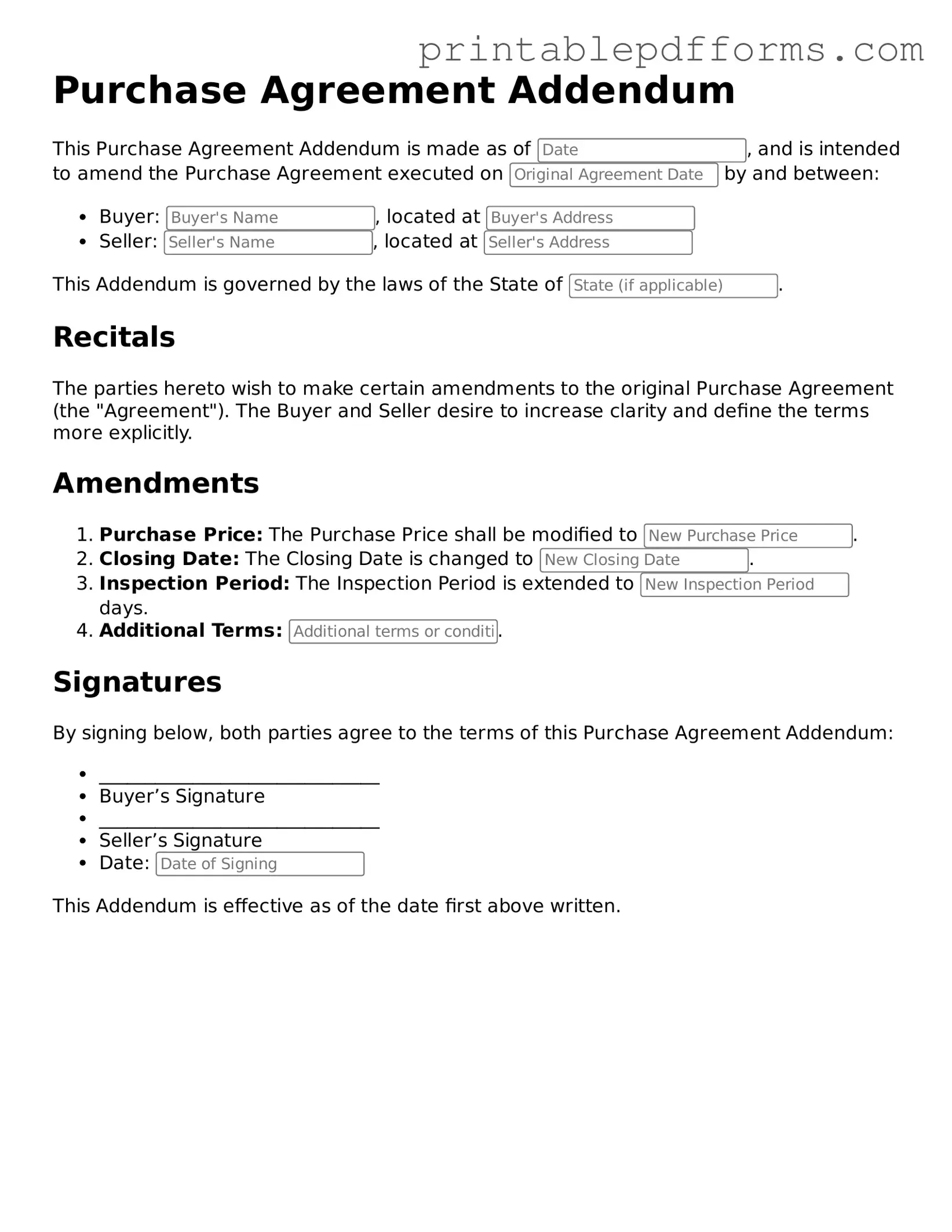Blank Purchase Agreement Addendum Form
The Purchase Agreement Addendum is a document that modifies or adds to an existing purchase agreement between a buyer and a seller. This form allows both parties to clarify terms, address contingencies, or make other necessary adjustments. Understanding its purpose is crucial for ensuring a smooth transaction process.
Ready to make your purchase agreement clearer? Fill out the form by clicking the button below.
Create This Document Online
